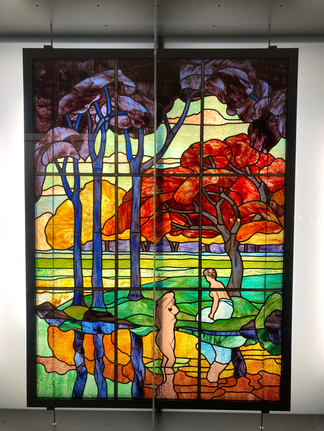I recently took myself off for a quick getaway to the medieval city of Limoges, France. I had no idea of what to expect from this city. It was convenience over dream destination that determined my choice. The plan was to walk and ‘be’. Different environment, different culture, different people. And maybe, even be surprised.
And surprised I was. The city did not disappoint. What a beautiful four days I experienced.
I’m a sentiment soul, and find myself falling in love with history more and more. I love story telling and hearing stories, and in the same way I love to hear a person’s story (hence podcast and coaching) I love to learn about a city’s story. About the people that once inhabited it. What they created. What they left behind. I find that these stories bring a city to life.
So, let’s talk about Limoges…
Limoges is a city with a population of 131,000 located in south-west central France. It was founded in 10 BC and became an important Gallo Roman city. Gallo I learned, refers to the Gauls or Gallic in Latin. A group of Celtic people's in mainland Europe that were conquered by the Romans.
The city is known for its decorated porcelain and in the 11th century, Limoges became a flourishing artistic centre. From the 12th century onwards, its porcelain was exported throughout the Christian world, and in fact, more than 50% of all porcelain made in France comes from Limoges. In 2018, it was named as a UNESCO creative city.
You can feel this creativity buzzing through the windy small picturesque streets. With quirky and tasteful boutiques and delectable eateries around every corner. These gems are endless and just when you think ‘you've done it all’, you discover another artisan patisserie, chocolatier, perfumery, or gift shop. What the French do so effectively in contemporary design, is combine ‘fun’ and sophistication perfectly.
Despite the small scale of the city, it is steeped in history. Below are just some of the historical sights that really tantalised my senses.
Quartier de la Boucherie had to be my first stop as this is what captivated me in the few images I'd seen before my trip. Boucherie refers to butchers and as the name suggests, this was the butchers quarter. You can feel the medieval atmosphere amongst these old streets and can imagine that once, there would been a hive of activity here.
Now you find charming boutiques housed in these buildings. I discovered the most amazing little concept store selling designer gifts by French brands only.
Cathedrale St-Etienne is a Roman Catholic Church in the Gothic Renaissance and Romanesque styles. It’s construction began in 1273 and finished in 1888. Because of the time of year I visited, there was no one else in the cathedral and upon entering this vast stone structure, the temperature was cold, it was dark in there and felt eerie. This also made it exciting and awe inspiring. What struck me the most, in addition to the architecture were the organs, the incredibly detailed and vibrant stained glass windows (just how did they do these?) and the surface patterns on the walls and columns. So much contrasting but also complimentary design detail within one space.
Gare de Limoges Benedictins, designed by architect Roger Gonthier and inaugurated in 1928, was the first stone built station in the city. On two occasions during my trip, I was told by the French, that this was the most beautiful railway station in the whole of France and indeed, it was stunning. I loved not only the exterior of the station but also the art deco stained glass in the station, designed by artist Francis Chigot. I’ll be referring to more of his work later in the post.
Pavillon du Verdurier is now used as an art exhibition space, but was once a space for refrigerating meat imported from Argentina. The purpose of this; to put an end to the butcher families who monopolised the sector in rue de la Boucherie.
It was designed by the same architect who designed the Gare de Limoges Benedictins. I fell in love with the colour palette as well as the intricate mosaic work.
Musee des Beaux Arts De Limoges had to be one of the highlights of the trip. Located in the former Episcopal Palace, it opened in 1912. There are four collections in the museum; Enamels both contemporary and old, Fine Arts, The history of Limoges dating back to it's Gallo-Roman times and, Egyptology, which was gifted to Jean-Andre Perichan, a Limousin manufacturer who spent time in Egypt in the early 20th century.
I felt very fortunate as there was a temporary exhibition based on the work of Francis Chigot. Chigot was a painter born in Limoges in 1879. He went onto become the leading French stained glass artist. I'd not heard of Chigot before my trip but I'm over the moon that I got to see his work as his use of colour and painting style was just delectable.
Francis Chigot 1879-1960
Around town
There was so much to see in Limoges that to put it all into categories would have been an endless task, so below, I have shared photos I took around town including some of the treats I may have sampled :)

I hope you enjoyed reading. If you'd like to watch the video version of this blog, pop over to my Instagram feed.
I would also love to hear any feedback you may have in the comments section.
















































































Comments